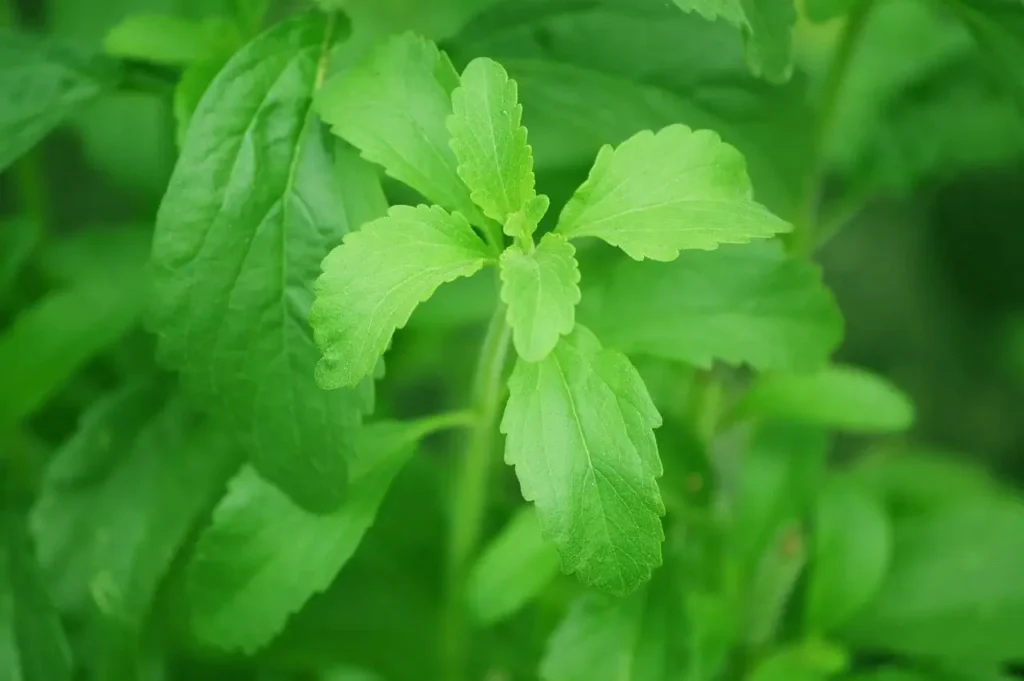Stevia is a popular sugar substitute known for its natural sweetness without the added calories. Despite its widespread use, there are often misconceptions about whether it is considered an "artificial" sweetener.
No, stevia is not an artificial sweetener. It is derived from the leaves of the Stevia rebaudiana plant, making it a natural sweetener. Unlike artificial sweeteners, stevia is plant-based and does not undergo chemical processes to produce its sweetening compounds.
Understanding the difference between natural and artificial sweeteners is important, especially if you're trying to make healthier choices.
Is Stevia Sugar Healthy?
Stevia is often marketed as a healthier alternative to sugar, but it’s essential to consider the benefits and limitations of using stevia as a sugar substitute.
Yes, stevia can be considered a healthier option compared to regular sugar, as it contains no calories and does not raise blood sugar levels. It also has antioxidant properties that may benefit your overall health.
Dive Deeper: Why Stevia is a Healthier Alternative
- No Calories: Stevia is a calorie-free sweetener, making it an excellent option for those who want to reduce their calorie intake or manage their weight.
- Blood Sugar Levels: Unlike sugar, stevia does not spike blood glucose levels, making it safe for diabetics and those managing insulin resistance.
- Antioxidant Properties: Stevia contains compounds that have antioxidant effects, which may help reduce oxidative stress and inflammation in the body.
While stevia offers health benefits, it’s important to use it in moderation and balance it with a well-rounded diet.
Stevia Sugar Side Effects
Like any food or supplement, stevia may cause side effects for some people, especially when consumed in large quantities.
The side effects of stevia are generally mild but can include bloating, gas, or allergic reactions in sensitive individuals.
If used in large quantities for a long time, the following Potential Side Effects of Stevia may occur:
- Digestive Issues: Some people may experience mild digestive discomfort, such as bloating, gas, or an upset stomach after consuming stevia.
- Allergic Reactions: Although rare, allergic reactions to stevia can occur, causing symptoms like itching, rash, or swelling. If you experience these symptoms, it’s best to stop using stevia and consult with a healthcare provider.
- Blood Pressure: Stevia may have a slight blood pressure-lowering effect. While this could be beneficial for some, those on blood pressure medication should monitor their levels when using stevia regularly.
Overall, stevia is considered safe for most people when used in moderation, but it's important to be aware of any personal sensitivities.
Stevia vs Monk Fruit Sweetener
Stevia and monk fruit are both natural sweeteners, but they have different origins and benefits. So, how do they compare?
Stevia and monk fruit both offer natural sweetness without calories, but monk fruit contains mogrosides, which are 100-250 times sweeter than sugar, while stevia is typically 50-100 times sweeter.
Dive Deeper: Comparing Stevia and Monk Fruit
| Factor | Stevia | Monk Fruit |
|---|---|---|
| Sweetness | 50-100 times sweeter than sugar | 100-250 times sweeter than sugar |
| Calories | Zero calories | Zero calories |
| Blood Sugar Levels | Does not affect blood sugar levels | Does not affect blood sugar levels |
| Taste Profile | Slightly bitter aftertaste | No bitter aftertaste, but may have a fruity flavor |
| Origin | Derived from the leaves of the Stevia rebaudiana plant | Derived from the monk fruit (Siraitia grosvenorii) |
Both sweeteners are safe for most people and can be used in a variety of recipes. However, monk fruit may have a slight advantage for those who find stevia’s aftertaste unappealing.
Can Stevia Be Used in Candy?
Stevia’s unique properties make it a popular choice for low-calorie and sugar-free candy, but can it truly replace sugar in candy recipes?
Yes, stevia can be used in candy recipes, but it requires some adjustments since it lacks the bulk and texture of sugar.
Dive Deeper: Using Stevia in Candy
- Sweetness vs. Texture: While stevia provides sweetness, it doesn’t offer the same bulk and texture that sugar does. Therefore, other ingredients like sugar alcohols or inulin may be used to replace the texture sugar provides.
- Heat Sensitivity: Stevia can withstand high heat, making it suitable for many candy recipes. However, if you're making hard candies, it's important to test how stevia interacts with the cooking process.
- Flavor Balance: Some candies made with stevia may have a slightly different taste compared to those made with sugar. Adding small amounts of other natural sweeteners like monk fruit or erythritol can help achieve a more balanced flavor.
Stevia can be an excellent option for those looking to reduce sugar in their candy recipes while still enjoying sweetness, but experimentation with other ingredients may be necessary for the best results.
The future development of stevia sugar in supplements
Stevia polyphenols are made from the leaves of Stevia rebaudiana Bertoni, a plant of the Asteraceae family, through ethanol extraction, filtration, purification, concentration, drying and other processes (total polyphenols ≥ 40 g/100g). The main component of stevia dried leaves is steviol glycoside, which has the characteristics of high sweetness and low calories.
Stevia polyphenols are gradually used as a substitute for sweeteners and sugars, and are now widely used in food, supplements and medicines in more and more countries in the world.


Stevia leaves are used as ordinary food ingredients in Japan and South Korea; as dietary supplements in the European Union and the United States; and have a long history of consumption in my country, and are managed as ordinary food. The Food and Agriculture Organization of the United Nations clearly stated in a conference report in 2008: Normal people have no side effects on the human body when the daily intake of stevia sugar is below 4 mg/kg body weight.
Stevia polyphenols are rich byproducts in the production process of steviol glycosides. Stevia polyphenols account for about 2-4% of dry stevia leaves, mainly including chlorogenic acid, caffeic acid, quercetin and other ingredients. These active substances are rich in stevia leaves, and high-purity products can be obtained through advanced extraction and purification technology. With stevia polyphenols officially becoming a new food raw material, this also provides more possibilities for the development of new stevia foods.
Dive Deeper: Multiple effects of stevia polyphenols
A large number of studies have found that stevia polyphenols have multiple effects such as antioxidant, anti-inflammatory, antibacterial, and anti-diabetic, and have high application value.
Antioxidant: The oxygen free radical absorption capacity of stevia polyphenols (containing 50% chlorogenic acid) is 10.6 times that of grape seed extract and 119 times higher than that of wild blueberries. It can inhibit the formation of hydroperoxides in fish oil and protect the quality and shelf life of salmon sauce. Stevia polyphenols also help inhibit primary and secondary lipid oxidation and the growth of pathogenic microorganisms in refrigerated salmon paste. Phenolic compounds such as stevia polyphenols can neutralize free radicals and chelate transition metal ions, thereby preventing the formation of free radicals.
Anti-inflammatory: Studies have found that stevia leaf extracts containing stevia polyphenols have significant inhibitory effects on xanthine oxidase and urease, and can improve inflammation caused by tetrahydrofolate and phorbol 12-myristate 13-acetate. In short, stevia polyphenols may be a potent polyphenol with anti-inflammatory effects.
Antibacterial: Ortiz-Viedma et al. studied the antibacterial activity of stevia polyphenols on refrigerated salmon paste during storage. The results showed that stevia polyphenols can be used as food preservatives and antibacterial agents. The methanol extract and acetone extract of stevia polyphenols showed different inhibitory effects on bacteria such as Staphylococcus aureus and Escherichia coli. This shows that stevia polyphenols can be used as antibacterial agents. This is because the main components of polyphenols in stevia leaves include chlorogenic acid, which has antibacterial activity against typical Gram-negative foodborne pathogens and can be used as an antibacterial agent in the food industry to ensure food safety and hygiene.
Anti-diabetes: Rats treated with stevia whole leaf powder and stevia polyphenols showed lower blood glucose, alanine aminotransferase, and aspartate aminotransferase, and higher insulin levels in rats treated with stevia polyphenols compared with the control group. However, the blood glucose levels of rats treated with stevia fiber did not decrease. This shows that stevia polyphenols can prevent streptozotocin-induced diabetes in rats, reduce the risk of oxidative stress, and improve liver and kidney damage. Whey protein isolate (WPI) was fortified with stevia polyphenols, and it was found that WPI with 0.2% stevia polyphenols added had a more obvious anti-diabetic effect than unfortified WPI, which was mainly reflected in the blood glucose control of diabetic animals induced by streptozotocin.
Inhibition of digestive enzymes: The inhibitory effect of polyphenols on digestive enzymes is one of the mechanisms by which polyphenols have anti-obesity effects. Stevia polyphenols can inhibit two carbohydrate hydrolases (α-glucosidase and α-amylase) in a dose-dependent manner. In addition, supplementation with stevia extract can reduce serum and liver triglyceride levels in mice fed a high-fat diet, and carnitine levels in mice fed a high-fat diet with stevia extract increased, which plays an important role in fatty acid metabolism.
Dive Deeper: Market application of stevia
As a natural sugar substitute, stevia is becoming increasingly popular among people who want to lose fat or control blood sugar levels, creating huge market opportunities. According to Grandviewresearch market data, the global stevia market size in 2023 is US$513.4 million, and the compound annual growth rate from 2024 to 2030 is expected to be 11.9%.
Compared with synthetic additives, stevia polyphenols have the advantages of being natural, safe, and highly functional. Its good water solubility and thermal stability enable it to remain active during food processing, providing reliable guarantees for the development of functional foods. However, the application of stevia polyphenols is relatively small at present, and the relevant products on the market are mainly reflected in the application of steviol glycosides.
Conclusion
Stevia is a natural, calorie-free sweetener that offers several health benefits compared to traditional sugar. It’s not an artificial sweetener and can be safely used in various foods and drinks, including candy. However, it’s important to be aware of potential side effects and make informed decisions when choosing sweeteners.
References:
[1]https://pmc.ncbi.nlm.nih.gov/articles/PMC8600158/#sec4
[2]https://pmc.ncbi.nlm.nih.gov/articles/PMC10673113/
[3]https://www.grandviewresearch.com/industry-analysis/stevia-market
[4]https://ift.onlinelibrary.wiley.com/doi/full/10.1111/1750-3841.15017



One Response